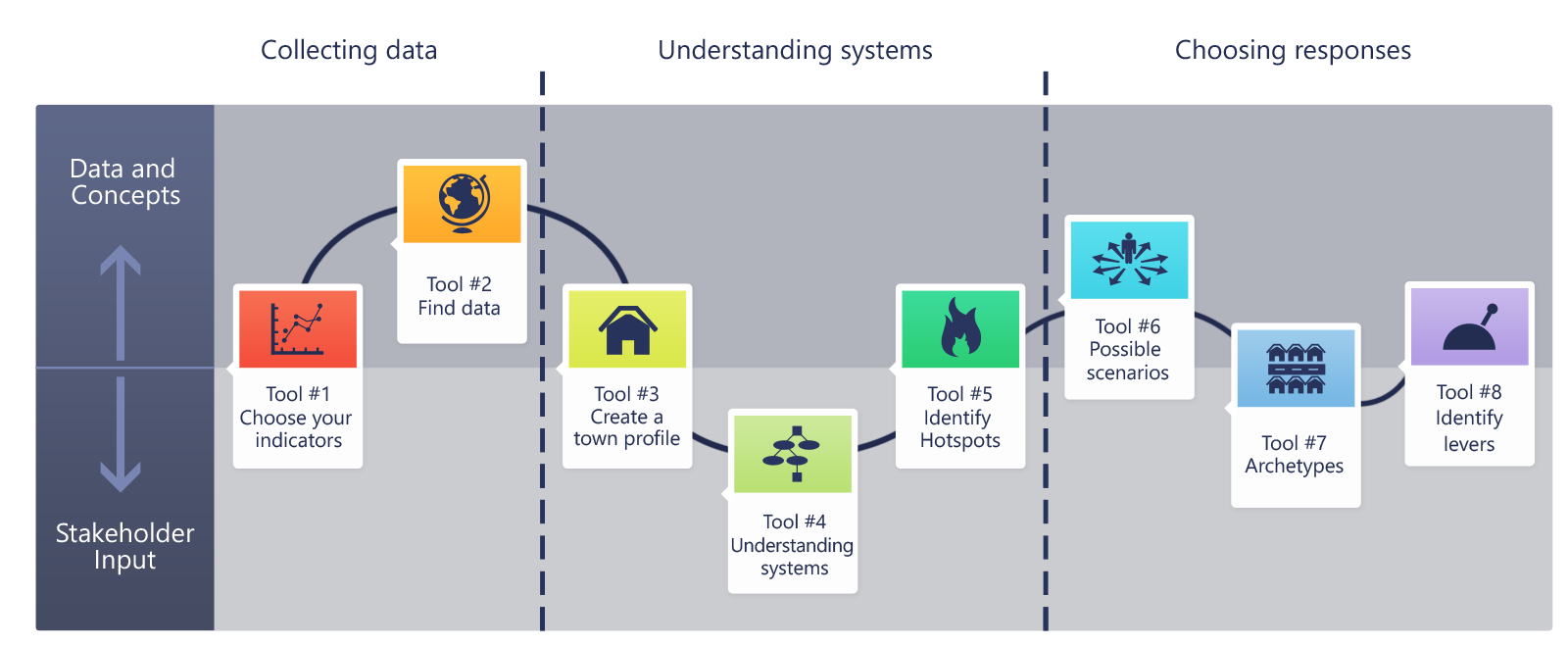Populating your indicators means inserting data and charting how things have changed over the past 15 years. For time-series data, use our simple template (for logged in users). Download it. You will need Microsoft Excel to open it.
How do we get the data for our chosen indicators?
So, you have chosen what to measure and know where to find data. This tool helps you to populate your indicators with data and create charts to show trends over time.
There are some great community profiles already done to use for inspiration. However, recognise that each community is different. Indicators should be selected at a local level. They need to reflect what is considered important to each community and what aspects of that community are sensitive to change.
That said, the basic indicators that we used here are designed to be widely applicable. You would start with this set, and ask for input. The community that you are focusing on may want different information. For example, how many people have been completing training for a trade, such as carpentry?
Creating a chart for each indicator is important. It allows comparing changes in each indicator over time. You can identify possible linkages between indicators. For example, what happens to population or crime rates when weekly rents go up?
Charts are also useful for starting a conversation about changes that have occurred. People can remark on the levels of change that are acceptable or not. For example, is a 20-percent rise in rent tolerable, or is it 10-percent? These conversations feed into planning ahead in light of the current trends.
Identifying these trends is one important service of this tool kit. Changes spotted in the chart of indicators may be associated with rapid resource development. For example, a spike in rents when a power station was being built suggests that the same thing might happen again unless housing availability is increased. The cause of changes tells you where to focus responses.
How do I use this tool?
Download and fill in the spreadsheet Tool 3: Spreadsheet Template and then follow these 5 steps below.
Please login below or register your interest here.


